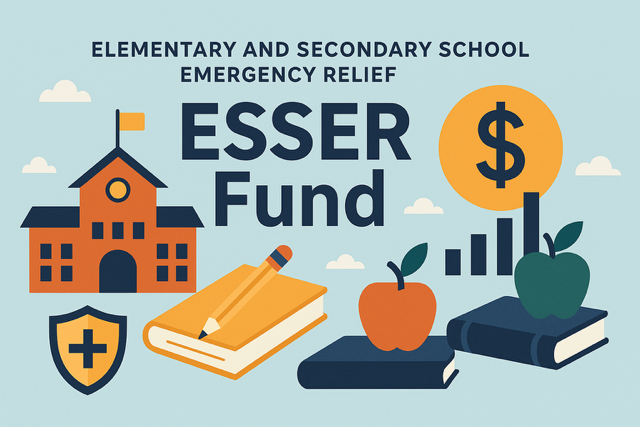
DISCOUNTED EDUCATION PRICING! CALL 1-877-891-8411. We Gladly Accept School Purchase Orders!

The Elementary and Secondary School Emergency Relief (ESSER) Fund represents one of the most substantial and transformative federal investments in K–12 education in U.S. history. Born out of the urgent need to address the profound disruptions caused by the COVID-19 pandemic, ESSER has provided nearly $190 billion to public schools across the nation—fueling innovation, stabilizing school operations, and supporting millions of students and educators during an unprecedented time.
Whether you’re a teacher striving to recover lost learning, a principal managing staffing and student needs, a district administrator navigating budgets and compliance, or an education-focused vendor aligning your solutions to school needs, understanding the full scope of the ESSER Fund isn’t optional—it’s essential. The way these funds are spent today will directly shape the future of teaching, learning, school infrastructure, and student outcomes for years to come.
In this comprehensive guide, we break down what the ESSER Fund is, why it was created, how districts have used it effectively, and—most importantly—what opportunities still remain in 2025 as schools face fast-approaching deadlines. Whether you’re looking to maximize the remaining funds or plan for a post-ESSER future, this blog offers clarity, strategy, and insight into one of the most important funding programs of our time.
The ESSER Fund (pronounced “ess-er”) is a federal relief fund that was established to help schools respond to the impact of COVID-19. It was created through three major pieces of legislation:
These funds provided billions of dollars directly to state education agencies (SEAs) and local education agencies (LEAs) to address pandemic-related challenges in schools.
Let’s break down the total funding:
In total, the ESSER Fund injected nearly $190 billion into K-12 education.
This was a once-in-a-generation investment in public schools, with the aim of ensuring continuity of education, addressing learning loss, and upgrading school infrastructure in response to the pandemic.
The COVID-19 pandemic disrupted nearly every aspect of school operations:
The ESSER Fund was designed to stabilize the system and provide flexibility in how schools responded. It wasn’t just about plugging holes—it was about reimagining schools to meet 21st-century demands.
ESSER funds are intentionally flexible, but they are guided by several priorities outlined by the Department of Education.
Yes, classroom materials, learning visuals, interactive tech, and even poster printers, lamination supplies, and educational graphics that support student engagement and learning recovery are all eligible under ESSER if they align with district goals and plans.
This is one of the most urgent questions educators and administrators are asking in 2025.
This means that right now, many districts are racing against the clock to obligate and spend ESSER III funds. Any unspent dollars will be returned to the federal government.
As the expiration deadline looms, districts are prioritizing investments with long-term value, such as:
Districts are also investing in tools that multiply teacher effectiveness, such as large-format printers for instructional posters and bulletin boards—ensuring that learning environments stay visually rich and engaging.
Yes. Transparency and accountability are key parts of the ESSER program. Districts must:
This is why it’s essential for schools to work with vendors familiar with ESSER compliance, who can help document spending and align solutions with funding goals.
Many educators are asking: What’s next after ESSER?
The truth is, while ESSER was unprecedented in scale, it was temporary. Once it expires, schools will return to traditional funding streams like:
This transition could lead to a fiscal cliff, especially if districts used ESSER to fund recurring expenses like staff salaries.
Now is the time for schools to:
If you’re a teacher or district decision-maker, here’s how to make the most of what’s left:
The ESSER Fund was not just a response to a crisis—it was an opportunity to transform how we teach and learn. From closing the digital divide to creating trauma-informed schools, these funds helped education evolve.
As we approach the final ESSER deadlines, let’s ensure the last dollars make the biggest impact. Prioritize solutions that are visible, durable, and student-centered—whether that’s through better technology, healthier classrooms, or tools that empower educators every day. Learn more about the 2026 Federal Budget For Schools and what’s at stake.